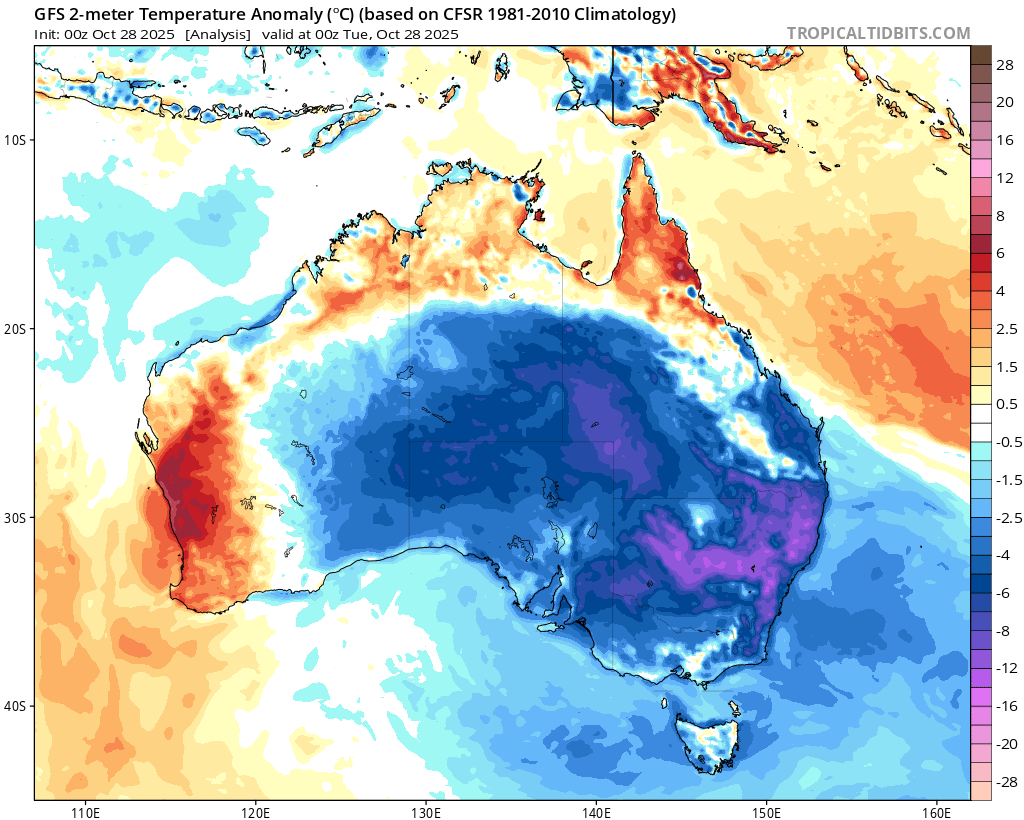Freezing Lows Grip Five Aussie States; Seoul Shivers Through Early-Season Frosts; QBO Raises Risk of Polar-Vortex Disruptions; + Basic Physics vs The CO2 Theory
We’re told a trace gas sets Earth’s thermostat. But multiple recent analyses show the data don’t fit that story.
Freezing Lows Grip Five Aussie States
A blast of polar air has engulfed southeastern Australia, delivering freezing lows across five states and the ACT — weeks before the start of summer.
The coldest air settled over the alpine regions, with Perisher Valley (NSW) reaching -8.8C (16F), the nation’s low. Nearby Mt Ginini on the ACT border dropped to -5.4C (22F) —within 0.1C of its coldest October night— while Canberra touched -0.2C (32F).

In Victoria, Mt Hotham tanked to -7.3C (19F), just a degree above its record October minimum, and Falls Creek logged -6.6C (20F) — its coldest October night in 19 years. Lower down, She Oaks fell to -0.2C, its coldest October night in 17 years, Kilmore Gap to 0.9C, its coldest in any month for three years, and Gelantipy to -2.3C, the coldest in three years.
Tasmania froze too, with Liawenee hitting -4.2C (25F) and Campania, northeast of Hobart, recording -1C (30F) — its chilliest October night in 17 years. In South Australia, Keith West dipped to -1.5C (29F), the state’s coldest temperature this October.
The sharp frost came from the remnants of a polar air mass funneled north.
Seoul Shivers Through Early-Season Frosts
South Korea has been gripped by an early blast of Arctic air, triggering the first ‘cold wave advisory’ of the season.
Keep reading with a 7-day free trial
Subscribe to Electroverse Substack to keep reading this post and get 7 days of free access to the full post archives.

